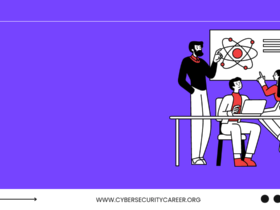As technology continues to advance and more of our lives are spent online, cyber security has become a crucial aspect of modern life. From protecting sensitive data to safeguarding personal information, the evolution of cyber security has been necessary to combat increasingly sophisticated threats. In this blog post, we will explore the history of cyber security, today’s current threats, how it has evolved over time and what the future holds for this ever-changing field. So sit back and prepare to learn about one of the most important aspects of our digital age!
The History of Cyber Security
The history of cyber security dates back to the 1970s when computer systems were first developed. Back then, there was little concern for protecting information as computers were not yet connected to networks.
However, with the rise of networked computing in the 1980s and 1990s, cyber attacks also started to emerge. The earliest forms of malware included viruses and worms that could spread through a network or infect files on a system.
As more people began using the internet for business and personal purposes in the early 2000s, new threats such as phishing scams and identity theft became prevalent. This led to an increased focus on cyber security by governments and businesses alike.
In recent years, major data breaches at companies like Target, Equifax, and Yahoo have highlighted just how important it is to take cyber security seriously. As we continue into an age where technology plays an even greater role in our lives, it becomes increasingly crucial that we stay vigilant against threats both old and new.
Today’s Cyber Security Threats
In the digital age, our reliance on technology has opened up a world of possibilities for individuals and businesses alike. However, it has also exposed us to a new set of threats that were once unimaginable. Cybersecurity threats have evolved over the years and continue to do so at an alarming rate.
One of the most common cybersecurity threats today is phishing. Phishing attacks involve tricking individuals into providing sensitive information such as passwords or bank details through fraudulent emails or websites. These attacks can be hard to detect and often result in financial loss for victims.
Another significant threat is ransomware attacks, where cybercriminals encrypt files on a victim’s computer and then demand payment in exchange for restoring access to them. Ransomware attacks are becoming increasingly sophisticated, making it harder for even large organizations with robust security systems to prevent them.
Moreover, malware remains one of the oldest cybersecurity threats but still poses a considerable risk today. Malicious software can infect computers without users’ knowledge and cause damage by stealing data or controlling systems remotely.
Modern-day cybersecurity threats require constant vigilance from both individuals and organizations alike. As our reliance on technology continues to grow, so too will these risks unless we take proactive steps towards protecting ourselves online.
How Cyber Security has Evolved
The evolution of cyber security has been a constant battle between attackers and defenders. In the early days, cyber security was primarily focused on protecting individual computers from malware and viruses. However, as technology advanced, so did the threats.
In 2002, the National Cyber Security Division was established in response to growing concerns about national security threats posed by hackers and cybercriminals. This marked a turning point in how governments approached cyber security.
As businesses began to rely more heavily on technology for their operations, cyber criminals shifted their focus towards attacking corporate networks. This led to the development of new technologies such as firewalls and intrusion detection systems designed specifically to protect business networks.
Today’s landscape is vastly different from what it once was. The rise of cloud computing has created new challenges for cyber security professionals who must now secure data that is hosted offsite. Additionally, mobile devices have become one of the most popular targets for attackers due to their widespread use among individuals and businesses alike.
Despite these challenges, advancements in artificial intelligence (AI) are providing new opportunities for defenders to stay ahead of attackers. AI-powered tools can quickly analyze large amounts of data to identify potential threats before they can cause damage.
While the evolution of cyber security has brought with it many challenges, it has also spurred innovation that will help us meet those challenges head-on in order to safeguard our digital lives moving forward.
The Future of Cyber Security
The future of cyber security is undoubtedly complex and uncertain. With the emergence of cutting-edge technologies such as the Internet of Things (IoT), Artificial Intelligence (AI), and Machine Learning, cyber threats are becoming more sophisticated than ever before.
One significant challenge that organizations will face in the future is keeping up with these fast-evolving technologies. As new innovations emerge, so do new vulnerabilities that hackers can exploit. Thus, it’s crucial for businesses to stay on top of emerging trends in technology and security to keep their networks safe.
Another important trend that we’re likely to see in the future is a shift towards greater collaboration between governments, businesses, and cybersecurity experts. Cyber threats don’t recognize borders or jurisdictions; they affect everyone who uses digital technologies. Therefore, it’s essential for all stakeholders to work together to combat this growing threat effectively.
We’re likely to see increased investment in cybersecurity by both public and private institutions. According to a recent report by Gartner Inc., global spending on information security products and services is expected to reach $150 billion by 2021! This shows just how seriously businesses are taking cyber threats today.
While we cannot predict precisely how cybercrime will evolve over time – one thing is certain: staying ahead of these evolving risks requires an ongoing commitment from all stakeholders involved in protecting our digital infrastructure.
Conclusion
As we have seen, cyber security has come a long way since its inception. From simple passwords to complex encryption algorithms and AI-powered solutions, technology has made it possible for us to stay ahead of the ever-evolving threats in the digital world.
However, as our reliance on technology increases, so too do the risks associated with it. With cyber criminals becoming more sophisticated by the day and new vulnerabilities being discovered all the time, it is clear that cyber security will continue to be a top priority for individuals and organizations alike.
While there is no silver bullet when it comes to protecting ourselves from cyber attacks, staying informed about the latest threats and implementing best practices can go a long way in keeping us safe online. By continuing to evolve alongside these emerging challenges and leveraging innovative technologies like blockchain or quantum computing (when they become available), we can ensure that our digital future remains secure for generations to come.










Leave a Reply